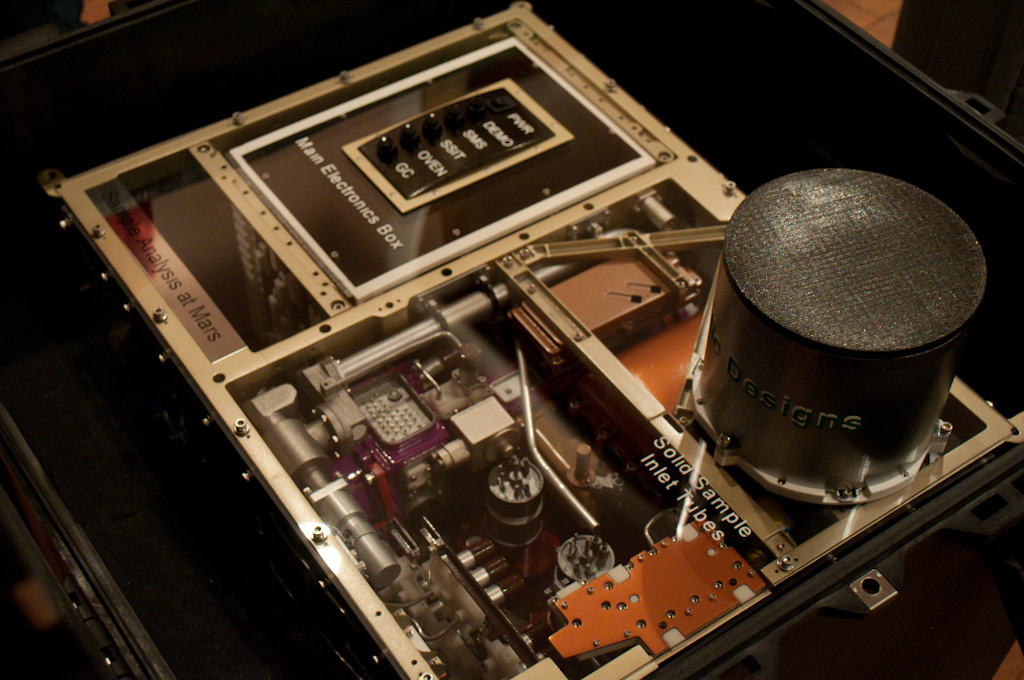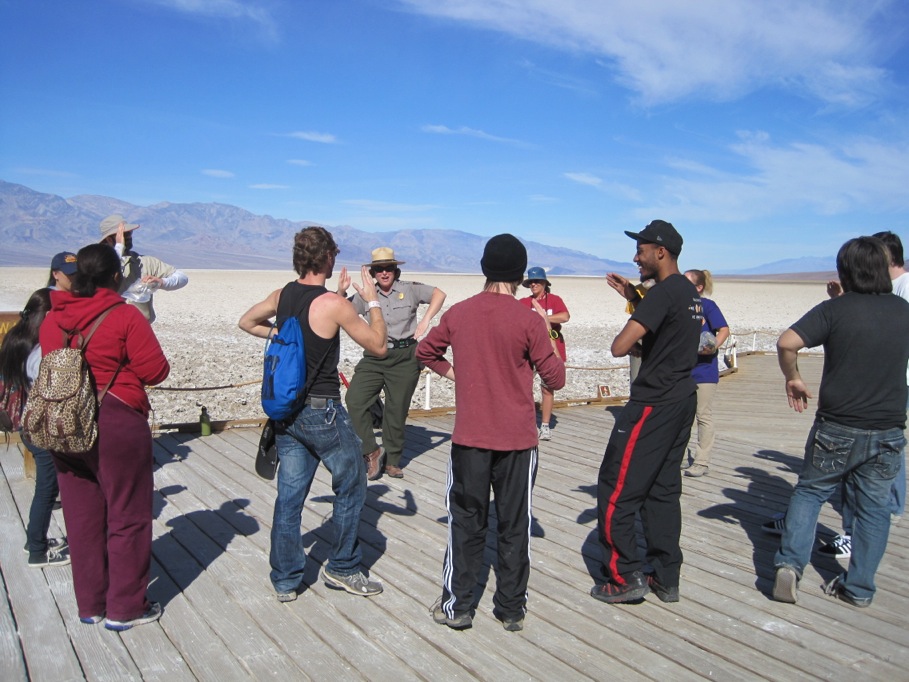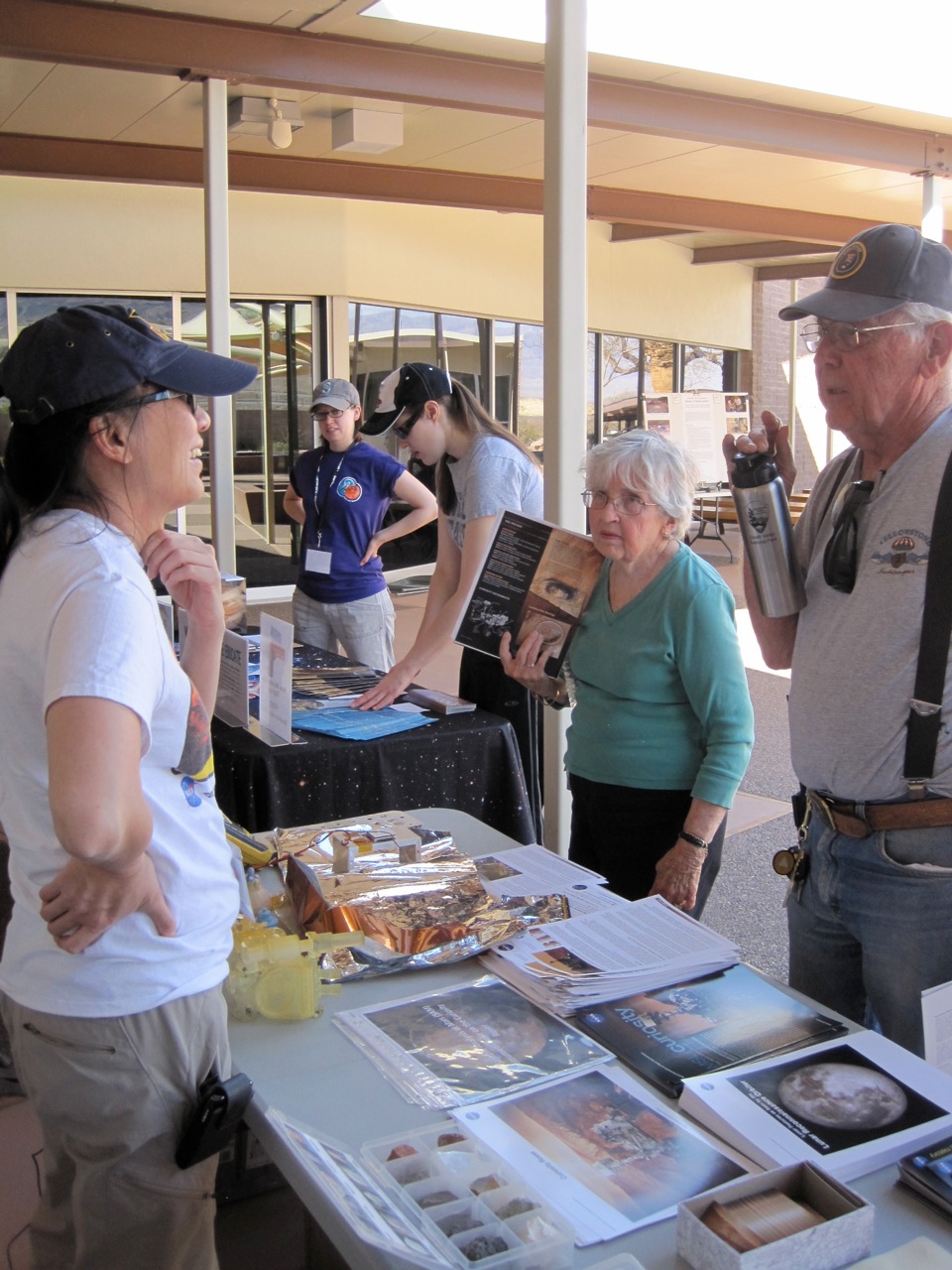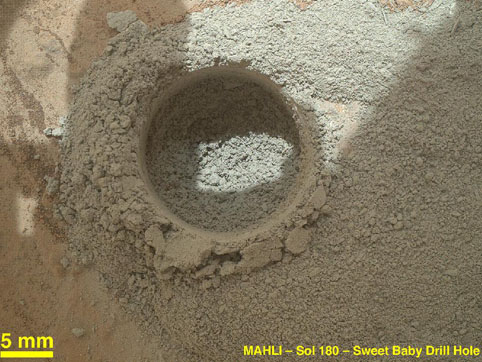21 June 2013
How do you prepare for SAM experiments to be run on Mars?
While the flight SAM instrument is busy exploring the environment of Gale crater onboard the
Curiosity rover on Mars, an Earth-based replica known as test-bed is being operated by a
crew of scientists and engineers at NASA Goddard Space Flight Center (GSFC) in Greenbelt, MD.
The test-bed is the proving ground where experiments are tested and validated before
instructions to do these experiments are sent to the flight SAM instrument to conduct on Mars.
The SAM test-bed is operated in a special chamber that simulates the temperature extremes
and atmospheric composition of Mars. As the environmental systems lead in the Planetary
Environments Laboratory at GSFC, I direct the design and fabrication of a number of
simulation and test facilities.
Since the MSL landing on August 6, 2012 the SAM test-bed has run 357 experiments in support of science activities.
The testing activities begin at the conceptual level during science team discussions and those ideas are the basis for
development of software scripts. Once the scripts are reviewed, the software is loaded into test-bed memory for
execution. The majority of test-bed experiments are conducted by SAM team member and supporting scientist
Charles Malespin and Mars chamber operator Ariel Siguelnitzky.
Recently the SAM testbed helped prepare for post-conjunction operations. (A conjunction of Mars occurs when
Mars goes behind the Sun from the perspective of Earth, and rovers and satellites on Mars temporarily lose
communication with Earth.) Major accomplishments in April, 2013 include the optimization of solid sample evolved
gas analysis experiments, noble gas atmospheric enrichment, gas chromatography calibration and the successful
execution of several first-time engineering tests of getters, scrubbers and high conductance valves.
In the beginning of May the SAM Gas Chromatograph (GC) team from France came to GSFC for a series of
calibration tests on two different GC columns using a French hydrocarbon gas mix.
A new SAM software script was recently developed by the SAM flight software lead Tom Nolan and software
script developer Micah Johnson. The test-bed team is now busy running verification and validation tests in
preparation for upgrading the software on the SAM flight instrument on Mars. The testing involves running
several of the 'staple' SAM experiments that were developed early-on and have already been programed into
flight SAM software, along with testing out new science features that the new flight software will support for
future Mars experiments.





